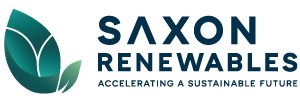Many companies are actively working to reduce their carbon emissions. In their quest to achieve net-zero emissions, organizations need to understand their sources of GHG emissions to effectively reduce them.
The terms "Scope 1," "Scope 2," and "Scope 3" in the context of carbon emissions reporting were introduced by the Greenhouse Gas Protocol (GHG Protocol). It has since become a globally recognized standard for organizations to measure and manage their GHG emissions, allowing them to better understand their carbon footprint.
The three scopes play a vital role in categorizing the various sources of emissions produced from an organization’s operations as well as across its entire network of suppliers and customers.
So, What Is Scope 1, 2 & 3 of Carbon Emission?
Scope 1 Carbon Emission
Think of it as direct emissions, like the act of "burning." It encompasses emissions from combustion of all the fuels the organization directly uses, such as the gas in corporate vehicles, heating oil or fuel for equipment.
Scope 2 Carbon Emission
Think of this category as the "purchased" emissions. Scope 2 comprises of emissions generated indirectly by an organization, from the sources where the energy is purchased, such as electricity, steam, heating, and cooling. For instance, emissions resulting from the generation of electricity used in our buildings falls under this category.
Scope 3 Carbon Emission
Scope 3 carbon emissions represents all indirect emissions associated with an organization's value chain, including emissions from suppliers and customers. The source of Scope 3 emissions ranges from everything beyond an organization's direct operations, such as raw material production, employees’ mode of transportation, customer’s use of an organization’s products and waste management.
Are Scope 1, 2 and 3 emissions simple to measure and reduce?
It’s somewhat simpler to measure emissions for scopes 1 and 2. Take energy consumed by an organization as an example. The data on fuel burned or energy purchased are attainable from meters and measuring devices.
GHG emissions from processes or equipment can then be computed to guide an organization on areas to improve energy efficiency and transition to renewable energy sources to result in reduction of emissions.
For many organizations, scope 3 makes up most of their total emissions. These are often complex to measure let alone to reduce. A net-zero commitment requires addressing the emissions within Scope 3. To tackle this, organizations should work with their suppliers and customers to find ways to effectively measure and reduce emissions in their supply chain.
As we progress, the importance of effectively handling these emissions will continue to increase, becoming a fundamental element of responsible organizational practices.
Saxon Renewables
Saxon Renewables offers a range of unbundled RECs & carbon credit options for corporate buyers, with a primary focus on meeting their requirements while maintaining the most cost-effective approach.
For many corporate buyers, especially in Malaysia, procuring RECs, whether bundled or unbundled, is a new endeavor. Saxon Renewables is here to provide support throughout your renewable energy or carbon credits procurement journey, from strategy development to execution.
There are numerous pathways available to help you achieve your renewable energy consumption objectives, and Saxon Renewables serves as your reliable sustainability partner for all your renewable energy needs.
Do not hesitate to reach out to us for further information and guidance on your sustainability journey.










